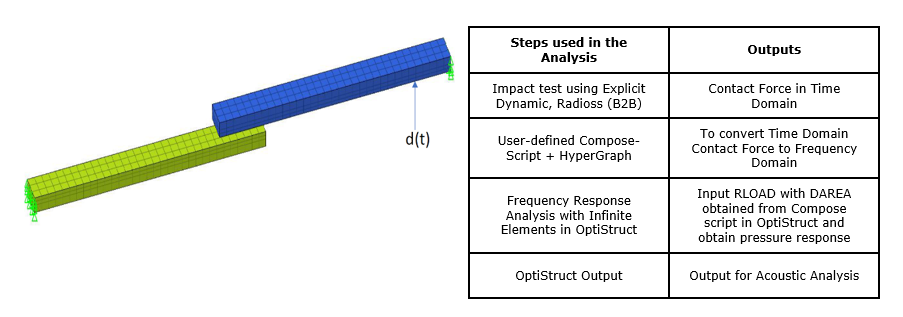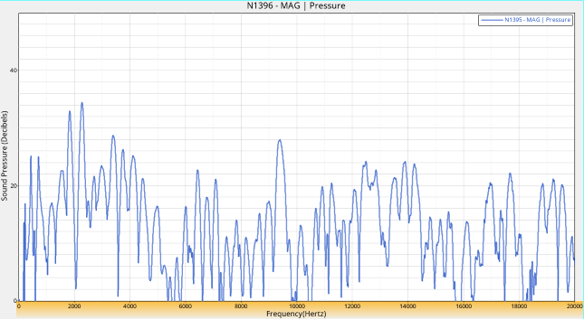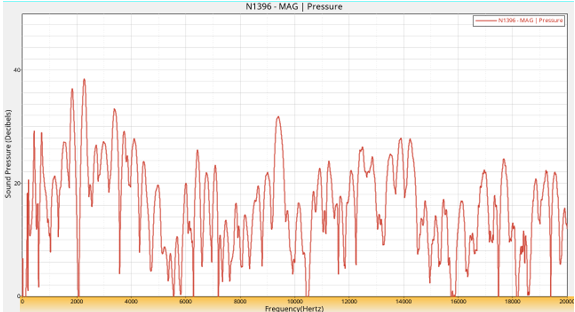OS-E: 0335 Measure Sound Radiation from Impacting Plates
Explicit Analysis of the impacting plates to extract the contact forces and performing Frequency Response Analysis using these forces as input to study the sound radiation by the plates.
Model Files
Refer to Access the Model Files to download the required model file(s).
The model files used in this example include:
- Impact_Test.fem
- Acoustic_Analysis.fem
- Acoustic_Analysis.h3d
- Compose_Script.oml
Model Description

Figure 1. Finite Element Model of Impacting Plates with the Boundary Conditions and Analysis Procedure

Figure 2. FE Setup for Frequency Response Analysis
- Material Properties: Polycarbonate (Plates)
- Young's modulus
- 1E+03 MPa
- Poisson's ratio
- 0.4
- Density
- 1E-09 ton/mm3
- Material Properties: Air (Acoustic Mesh)
- Sound velocity
- 343000 mm/s
- Density
- 1.2E-12 ton/mm3
Contact Force Conversion (Time to Frequency Domain)

Figure 3. Contact Force Time to Frequency Domain Conversion
Results

Figure 4. Sound Pressure Level at a Mic Point(N1395) . 2.5m far from the sound source with a maximum of 34.43 DB

Figure 5. Sound Pressure Level at a Mic Point(N1396) . 1.5m far from the sound source with a maximum of 38.41 DB